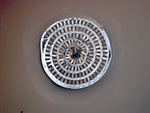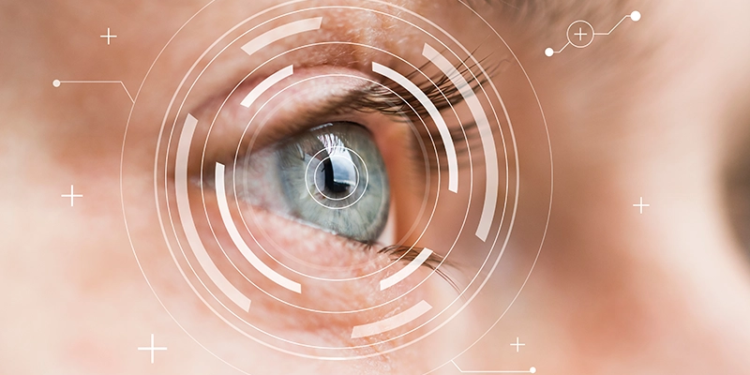
Coiled conduits: The microscopic channels in this polymer roll are the right size and shape for bundles of severed nerve cells to grow through them. The scaffold, augmented with electrodes, is intended to transmit electrical signals between an amputee’s nervous system and prosthetic limb. Photograph courtesy of Ravi Bellamkonda, PhD, and Akhil Srinivasan, Georgia Institute of Technology, Atlanta.
A research group at the Georgia Institute of Technology (Georgia Tech) Laboratory for Neuroengineering (NeuroLab), Atlanta, has designed a tubular support scaffold with tiny channels that fit snugly around bundles of nerve cells. This research has implications for neuro-controlled prosthetic limbs as researchers have been looking at ways to connect electrodes to nerve endings on residual limbs and then translate signals from those nerves into electrical instructions for moving prostheses. However, severed nerve cells on an amputated limb can only grow if a structure is present to support them, and they are notoriously fussy about the shape and size of that structure, according to Technology Review, a publication of the Massachusetts Institute of Technology (MIT), Cambridge.
The group, under the direction of Ravi Bellamkonda, PhD, who directs the Neurological Biomaterials and Cancer Therapeutics Laboratory, a part of NeuroLab, who also serves as associate vice president within the Georgia Tech Office of the Executive Vice President for Research, tested the structure with dorsal root ganglion cells and recently presented the results at the Society for Biomaterials conference.
The scaffold begins as a flat sheet with tiny grooves, similar to corrugated iron or cardboard. It is then rolled to form a porous cylinder with many tiny channels suited for healthy nerve-cell growth. The floors of the conduits double as electrodes, brushing up close to the nerve bundles and picking up nerve signals.
The ultimate goal is to enable two-way communication between the prosthetic limb and the wearer. Eventually, this design could separate the two kinds of nerve cells within a bundle, so neural cues directing hand movement would travel along one channel and information about touch and temperature from the prosthetic limb would travel to the brain along another channel.
The multichannel scaffold could give added dexterity to prosthetic limbs. “You need to be able to stimulate as many axons as possible for movement, and you need to be able to pick up signals from as many axons as possible,” Akhil Srinivasan, graduate research assistant in Bellamkonda’s lab and primary researcher on the project, was quoted as saying.
The most sophisticated of the electrodes currently used at nerve endings have about 16 channels to control movement. But the arm has 22 degrees of freedom. “You need at least 22 reliable channels,” Mario Romero-Ortega, PhD, associate professor of bioengineering at the University of Texas, Arlington, said. “That’s the limitation-we only have a few, but you need more.”
The electrode-roll design builds on previous work, but the new scaffold is made of materials that are safe for biological use. “They’re the first to show in vitro growth,” Romero-Ortega added.
To make the microarrays, a coat of the polymer polydimethyl siloxane is laid down on a glass slide to create a thin, uniform base, and a layer of a light-sensitive polymer, SU-8, is added. Ultraviolet light is shined on the SU-8 through a grating, and the parts of the surface exposed to the light bond together to form walls. The unbonded sections in between are then washed away, leaving behind row upon row of conduits. The grooved surface is capped with a second layer of base polymer, and the polymer sandwich is rolled into a cylinder.
So far, the rolled-up microarray still lacks electrodes, but Srinivasan said the next steps will be to insert gold electrodes into the base of the scaffold. The wired microarray will then be tested in a rat model.
Editor’s note: This story has been adapted from materials provided by Technology Review, a publication of the Massachusetts Institute of Technology (MIT), Cambridge.




